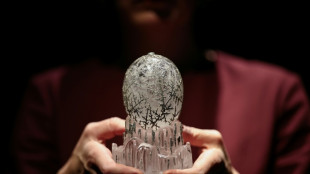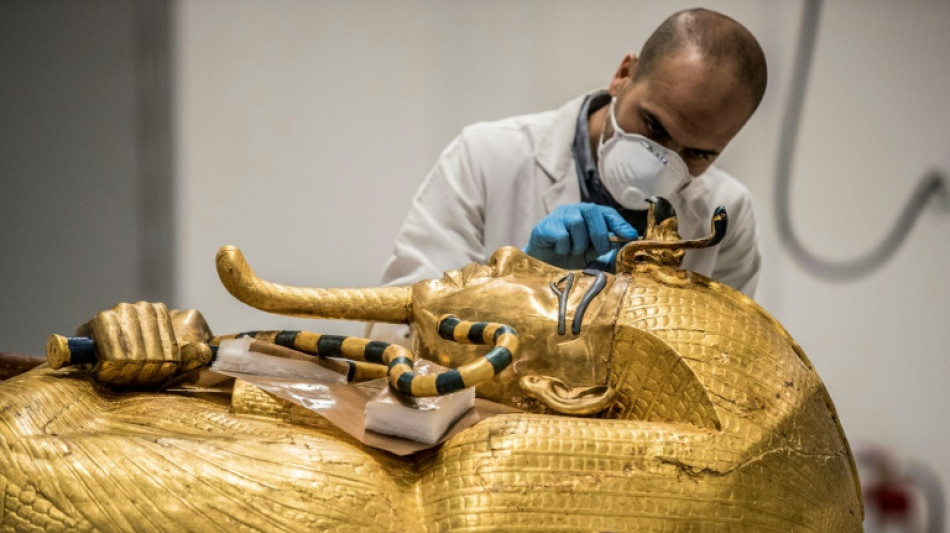
-
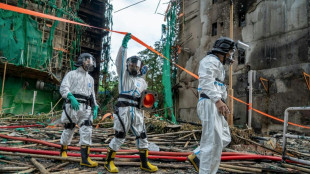 Hong Kong leader says independent committee to probe fire
Hong Kong leader says independent committee to probe fire
-
How deforestation turbocharged Indonesia's deadly floods

-
 New Zealand 231-9 as 'old school' West Indies exploit pace-friendly wicket
New Zealand 231-9 as 'old school' West Indies exploit pace-friendly wicket
-
England spinner Jacks replaces injured Wood for second Ashes Test

-
 Pope Leo to hold Beirut mass, visit port blast site
Pope Leo to hold Beirut mass, visit port blast site
-
Australia opener Khawaja out of second Ashes Test with injury
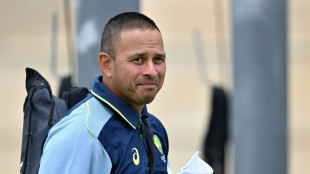
-
 Concern as India orders phone manufacturers to preload govt app
Concern as India orders phone manufacturers to preload govt app
-
French talent Kroupi 'ready to suffer' to realise Premier League dream

-
 New Zealand 231-9 as West Indies exploit bowler-friendly wicket
New Zealand 231-9 as West Indies exploit bowler-friendly wicket
-
US Republicans sweat toss-up election in traditional stronghold
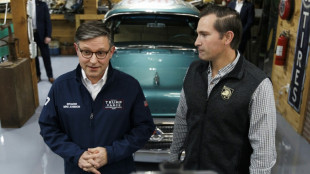
-
 'Rescued my soul': Hong Kong firefighters save beloved pets
'Rescued my soul': Hong Kong firefighters save beloved pets
-
Suns eclipse shoddy Lakers, Mavs upset Nuggets
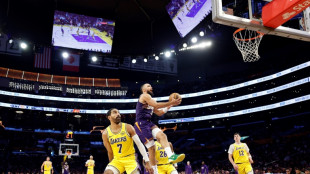
-
 Seven footballers in Malaysia eligibility scandal 'victims': union
Seven footballers in Malaysia eligibility scandal 'victims': union
-
Patriots on brink of playoffs after Giants rout

-
 Survivors, families seek answers to deadly Hong Kong ferry disaster
Survivors, families seek answers to deadly Hong Kong ferry disaster
-
Race to get aid to Asia flood survivors as toll nears 1,200

-
 Rugby World Cup draw: who, how and when?
Rugby World Cup draw: who, how and when?
-
Williamson falls for 52 as NZ reach 128-5 in West Indies Test

-
 Hong Kong leader announces 'independent committee' to probe fire
Hong Kong leader announces 'independent committee' to probe fire
-
South Korean leader calls for penalties over e-commerce data leak

-
 Samsung unveils first 'special edition' triple-folding phone
Samsung unveils first 'special edition' triple-folding phone
-
Apple AI chief leaving as iPhone maker plays catch-up
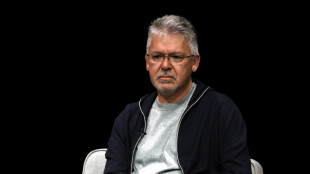
-
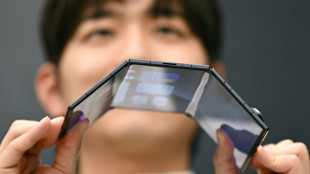 Asian markets rise as US rate cut bets temper Japan bond unease
Asian markets rise as US rate cut bets temper Japan bond unease
-
Weight of history against England in pink-ball Gabba Ashes Test
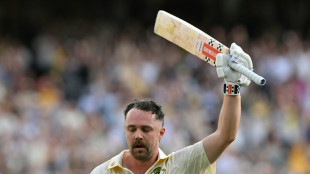
-
 How South Korea's brief martial law upended lives
How South Korea's brief martial law upended lives
-
VR headsets take war-scarred children to world away from Gaza
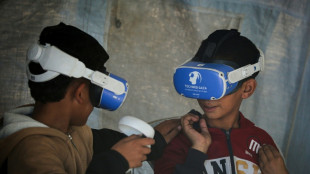
-
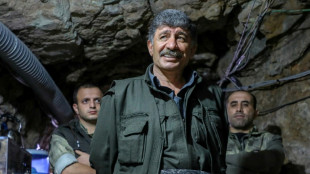 'We chose it': PKK fighters cherish life in Iraq's mountains
'We chose it': PKK fighters cherish life in Iraq's mountains
-
US envoy to meet Russia's Putin for talks on ending Ukraine war

-
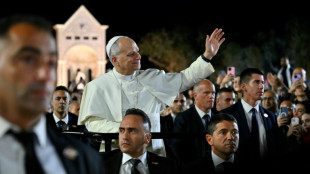 Pope Leo holds Beirut mass and visits site of port blast
Pope Leo holds Beirut mass and visits site of port blast
-
'Quad God' Malinin ramps up Olympic preparations at Grand Prix Final

-
 New Zealand 17-1 at lunch in rain-hit West Indies Test
New Zealand 17-1 at lunch in rain-hit West Indies Test
-
Pacific island office enabling sanctions-busting 'shadow fleets'

-
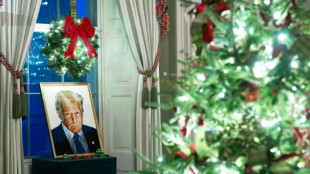 White House gets scaled-down Christmas display amid ballroom work
White House gets scaled-down Christmas display amid ballroom work
-
GEN Announces New Positive Phase 1 Trial Data of the Investigational Drug SUL-238 for Alzheimer's and Other Neurodegenerative Diseases

-
 White House confirms admiral ordered 2nd strike on alleged drug boat
White House confirms admiral ordered 2nd strike on alleged drug boat
-
Nigeria's defence minister resigns amid security crisis: presidency
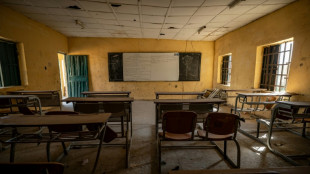
-
 From Honduras to Poland, Trump meddles in elections as never before
From Honduras to Poland, Trump meddles in elections as never before
-
Trump holds Venezuela meeting as Maduro rejects 'slave's peace'

-
 12 dead, dozens missing as landslide submerges boats in Peru port
12 dead, dozens missing as landslide submerges boats in Peru port
-
Vardy's first Serie A double fires Cremonese past high-flying Bologna

-
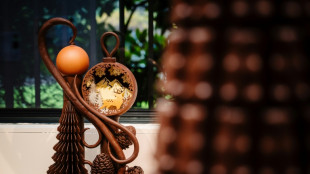 Rich art: French pastry chefs auction chocolate sculptures
Rich art: French pastry chefs auction chocolate sculptures
-
Cameroon sack coach Brys, drop goalkeeper Onana for AFCON
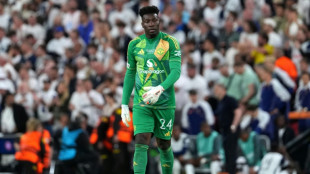
-
 Son of Mexican crime lord 'El Chapo' pleads guilty in drug case: US media
Son of Mexican crime lord 'El Chapo' pleads guilty in drug case: US media
-
Right-wing rivals for Honduras presidency in 'technical tie'
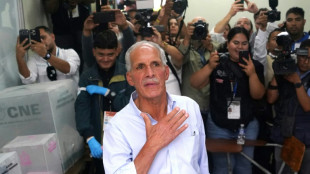
-
 US upbeat on pushing Ukraine deal as envoy heads to Russia
US upbeat on pushing Ukraine deal as envoy heads to Russia
-
European rocket puts S.Korean satellite in orbit

-
 Trump to meet top national security team on Venezuela
Trump to meet top national security team on Venezuela
-
US Supreme Court hears major online music piracy case

-
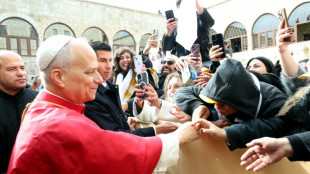 Pope gets rockstar welcome as he delivers message of hope to Lebanese youth
Pope gets rockstar welcome as he delivers message of hope to Lebanese youth
-
Iran sentences director Jafar Panahi to year in prison: lawyer
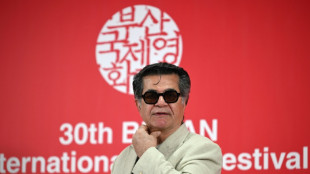
| RBGPF | 1.54% | 79 | $ | |
| RYCEF | -2.68% | 13.83 | $ | |
| SCS | 0.55% | 16.38 | $ | |
| CMSC | -0.39% | 23.32 | $ | |
| CMSD | -0.13% | 23.29 | $ | |
| VOD | -2.8% | 12.13 | $ | |
| NGG | -0.61% | 75.65 | $ | |
| BTI | -0.91% | 58.13 | $ | |
| GSK | -1.42% | 47.19 | $ | |
| RIO | 0.03% | 71.97 | $ | |
| RELX | -1.23% | 39.72 | $ | |
| BCC | -1.18% | 75.13 | $ | |
| BCE | -0.09% | 23.49 | $ | |
| JRI | -0.15% | 13.78 | $ | |
| AZN | -2.44% | 90.52 | $ | |
| BP | 1.12% | 36.51 | $ |

Egyptian conservators give King Tut's treasures new glow
As a teenager, Eid Mertah would pore over books about King Tutankhamun, tracing hieroglyphs and dreaming of holding the boy pharaoh's golden mask in his hands.
Years later, the Egyptian conservator found himself gently brushing centuries-old dust off one of Tut's gilded ceremonial shrines -- a piece he had only seen in textbooks.
"I studied archaeology because of Tut," Mertah, 36, told AFP. "It was my dream to work on his treasures -- and that dream came true."
Mertah is one of more than 150 conservators and 100 archaeologists who have laboured quietly for over a decade to restore thousands of artefacts ahead of the long-awaited opening of the Grand Egyptian Museum (GEM) -- a $1 billion project on the edge of the Giza Plateau.
Originally slated for July 3, the launch has once again been postponed -- now expected in the final months of the year -- due to regional security concerns.
The museum's opening has faced delays over the years for various reasons, ranging from political upheaval to the Covid-19 pandemic.
But when it finally opens, the GEM will be the world's largest archaeological museum devoted to a single civilisation.
It will house more than 100,000 artefacts, with over half on public display, and will include a unique feature: a live conservation lab.
From behind glass walls, visitors will be able to watch in real time as experts work over the next three years to restore a 4,500-year-old boat buried near the tomb of Pharaoh Khufu and intended to ferry his soul across the sky with the sun god Ra.
But the star of the museum remains King Tut's collection of more than 5,000 objects -- many to be displayed together for the first time.
Among them are his golden funeral mask, gilded coffins, golden amulets, beaded collars, ceremonial chariots and two mummified foetuses believed to be his stillborn daughters.
- 'Puzzle of gold' -
Many of these treasures have not undergone restoration since British archaeologist Howard Carter discovered them in 1922.
The conservation methods used by Carter's team were intended to protect the objects, but over a century later, they have posed challenges for their modern-day successors.
Coating gold surfaces in wax, for instance, "preserved the objects at the time", said conservator Hind Bayoumi, "but it then hid the very details we want the world to see".
For months, Bayoumi, 39, and her colleagues painstakingly removed the wax applied by British chemist Alfred Lucas, which had over decades trapped dirt and dulled the shine of the gold.
Restoration has been a joint effort between Egypt and Japan, which contributed $800 million in loans and provided technical support.
Egyptian conservators -- many trained by Japanese experts -- have led cutting-edge work across 19 laboratories covering wood, metal, papyrus, textiles and more.
Tut's gilded coffin -- brought from his tomb in Luxor -- proved one of the most intricate jobs.
At the GEM's wood lab, conservator Fatma Magdy, 34, used magnifying lenses and archival photos to reassemble its delicate gold sheets.
"It was like solving a giant puzzle," she said. "The shape of the break, the flow of the hieroglyphs -- every detail mattered."
- Touching history -
Before restoration, the Tutankhamun collection was retrieved from several museums and storage sites, including the Egyptian Museum in Tahrir Square, the Luxor Museum and the tomb itself.
Some items were given light restoration before their relocation to ensure they could be safely moved.
Teams first conducted photographic documentation, X-ray analysis and material testing to understand each item's condition before touching it.
"We had to understand the condition of each piece -- the gold layers, the adhesives, wood structure -- everything," said Mertah, who worked on King Tut's ceremonial shrines at the Egyptian Museum.
Fragile pieces were stabilised with Japanese tissue paper -- thin but strong -- and adhesives like Paraloid B-72 and Klucel G, both reversible and minimally invasive.
The team's guiding philosophy throughout has been one of restraint.
"The goal is always to do the least amount necessary -- and to respect the object's history," said Mohamed Moustafa, 36, another senior restorer.
Beyond the restoration work, the process has been an emotional journey for many of those involved.
"I think we're more excited to see the museum than tourists are," Moustafa said.
"When visitors walk through the museum, they'll see the beauty of these artefacts. But for us, every piece is a reminder of the endless working hours, the debates, the trainings."
"Every piece tells a story."
F.Stadler--VB



